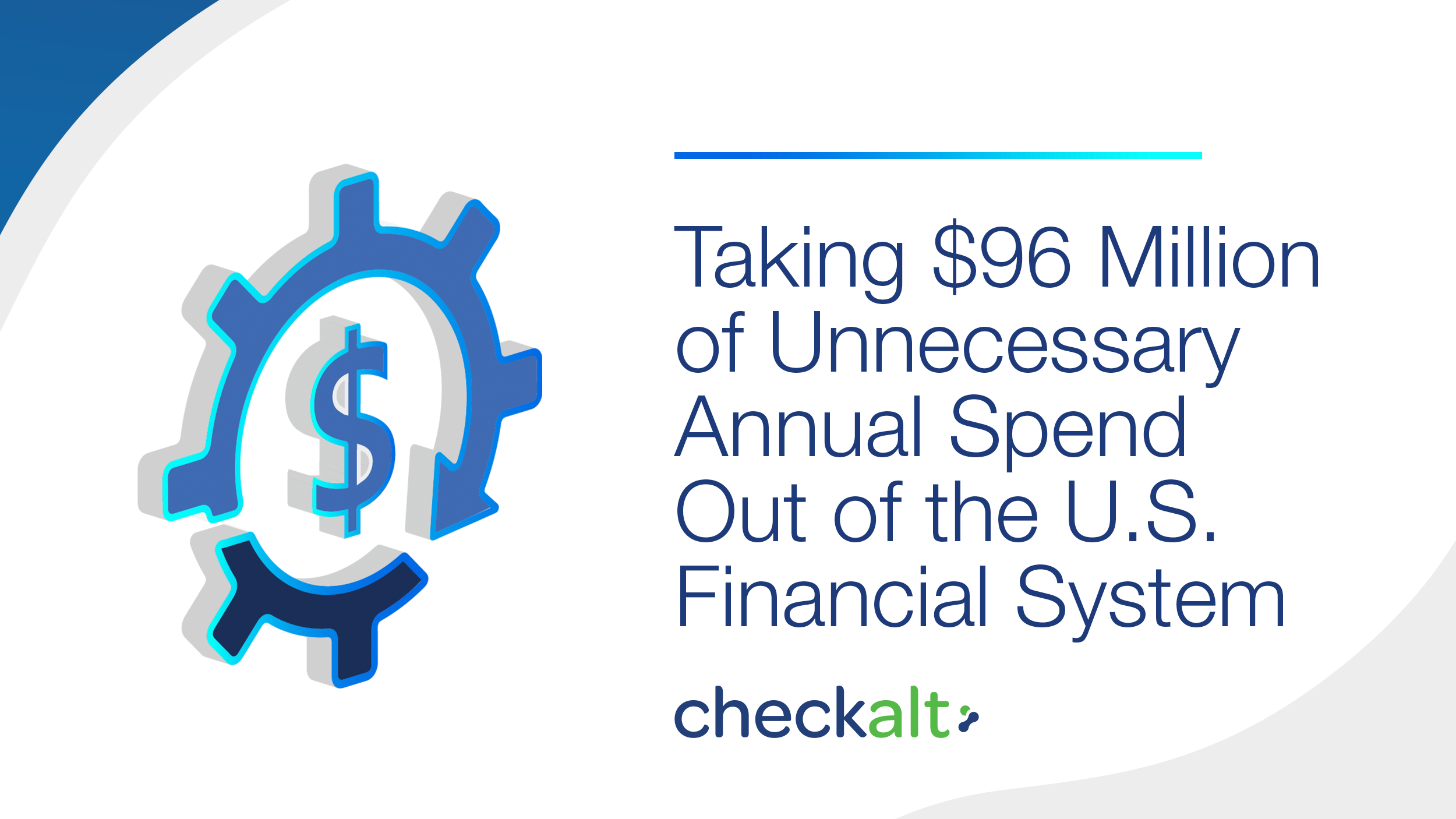Understanding Gen Z Banking Preferences: What Financial Institutions Can Do to Stay Relevant
With Gen Z gaining financial independence, banks and credit unions face a generational inflection point. These digital natives—born between 1996 and...

Imagine a scenario in which there are thousands of individual businesses that are in the same industry, some of which are small mom and pop shops; others are giant Fortune 500 members. Periodic disputes ensue within this industry involving a client of one business having an issue with the client of another business, and the only way for these disputes to be resolved is for the two businesses to exchange non-public information about their clients. However, there is no secure system to which all of these businesses are connected so faxes become the only secure method that these thousands of businesses can communicate. The manual effort needed on either end to create, transmit, process, and remediate disputes seems nearly impossible to eliminate, plus there are operating rules governing the process with increasing fines for substantial non-compliance.
Now imagine that the above scenario is the U.S. banking system, the thousands of businesses are financial institutions (FIs), and the disputes are payment events. This is not describing a problem that occurred in the distant past but what is occurring today. Each of the thousands of FIs is advocating for its respective customers, so it’s not difficult to believe that the manual effort resolving these disputes represents at least $96 million of wasted money across the system per year—and that number only represents the cost associated with Automated Clearing House (ACH) disputes. If the cost for all payment disputes were similarly calculated, the annual number would be much, much higher.
Truly understanding the scope of this $96 million problem requires a grasp of the current process. Currently the process requires significant manual data entry, case research, and faxing information between parties as there is no central secure service for filing and managing payment disputes between receiving and originating financial institutions, as well as originating financial institutions and their originating companies. It’s hard to believe that this problem would even exist in 2020; why wouldn’t this have been solved many years ago? There are several barriers to a systemic solution to this problem:
Mail is too slow;
Email is not secure;
Secure email is secure but not all FIs use the same secure email system;
Any one entity can only create partial automation; but in order to fully automate, a system would have to be available to all FIs;
• One institution might be a large FI like JP Morgan Chase and the other party might be a $120 million community bank in central Texas.
Based on the type and size of the FI, the functionality needed is dramatically different;
• Small FIs may need only one user access profile, a large FI may have dozens of users.
• Small FIs would be fine with manually keying in a case, large FIs need automation on case creation.
ACH transactions can be originated through multiple sources. There are two ACH clearing houses, the Federal Reserve and The Clearing House. Moreover, some FIs deliver ACH transactions in private exchanges. There is no single secure system that connects all ACH transactions regardless of how it was sent from or delivered to the FIs.
Some of the large originating deposit FIs and receiving deposit FIs (ODFIs and RDFIs) have achieved some cost reduction by automating pieces of the ACH dispute problem or moving manual dispute remediation elements offshore, but there are still two significant elements that ultimately must be manually addressed: 1) how to align requests and responses from FI to FI, and 2) how to align requests and responses from ODFIs and their originating companies.
In order to fully understand how these two elements contribute to the excessive cost of remediating ACH disputes, let’s examine an ACH Request for Authorization (ROA) as a representative dispute type. ROA disputes are initiated when an RDFI customer calls in to dispute an electronic (ACH) debit to their account and the RDFI elects to request a copy of the authorization from the originating company (Originator). Here’s what happens next:
• RDFIs have to research to determine what FI originated the ACH debit (ODFI), create a manual fax request to send to the ODFI that contains the relevant and non-public information, find the appropriate fax number for that ODFI and hope that the fax is successfully delivered.
• The ODFI whose Originator created the transaction in question is the recipient of the fax, assuming that it was received (direct faxes and faxes submitted via secure email do get lost).
• The ODFI does not have the information that is being requested; they must request a copy of any documentation that is associated with the ACH transaction authorization from their customer, the Originator. They can do this through an online system or secure email, but many ODFIs communicate with their Originators via fax.
• The originating company must comply with the ODFI request, hopefully locating the requested document(s) and returning this information to the ODFI.
• The ODFI must identify the received information from the Originator, and match it up to the appropriate RDFI request.
• The ODFI must then deliver the supplied documentation to the RDFI, which created the initial request.
• All of the above has to be performed within a 10-business day period. Failure to do so subjects the ODFI to fines as documented in the ACH Operating Rules.
Now consider that, for a bank like Chase, the one dispute event documented above occurs multiple times a day. In fact, volume for a large ODFI can easily be 150 to as many as 1,000 cases every business day. With this type of volume, it’s easy to understand the difficulty of tracking cases, including the manual effort involved with correctly associating the related documentation to each case. Further consider that there are about 11,000 banks and credit unions in the U.S. Any one of them could have a situation that results in a dispute to be filed or for which a response is required. It is because of the size and scope of this problem that in 2019 Nacha estimated the overall cost to the system to be $96 million. The overall cost is very likely over $100 million today.
What would a system that would automate payment disputes for the entire industry provide? Again, using ACH as a representative payment type example, a systemic solution would:
- Provide an end-to-end secure connection for all participants.
• FI-to-FI communication.
• FI-to-Originator communication.
-Be available for any ACH dispute regardless of how the ACH transaction was created or delivered.
-Contain logic to ensure that only valid requests could be initiated.
-Provide options for ODFIs to automate responses to RDFIs;
-Provide options for ODFIs to automate responses to/from originators.
-Provide notifications and event tracking to all participants.
• Notices to the FI creating a case that the case was successfully delivered.
• Notice to the FI receiving a case that a new case has been received.
• Notices to the Originator that a new case is ready for processing.
• Notices to the ODFI if originators are not responding to cases (to address that there is an ACH Rule governing max time frame for the FI to respond).
• Notices to the FI initiating a case when the case has been completed.
-Enable compliance with ACH operating rules.
• Support all 10 existing dispute types for ACH and support new dispute types that are created.
-Automatically detect duplicate cases.
• Track historical events for any party to be able to retrieve and respond to previous dispute events.
Recognizing that this systemic issue demanded a systemic solution that addressed all facets of the problem, U.S. Dataworks, Inc., a CheckAlt company (USD), embarked on a development project that culminated in the creation of Payment Case Manager (PCM). PCM provides all U.S. based financial institution with a secure mechanism to initiate and process payment cases. Initially limited to ACH transactions, PCM will give participants the ability to electronically create and deliver dispute cases, replacing the current method of faxing documents with secure electronic submission and processing. PCM is built on the U.S. Dataworks real-time Clearingworks platform, which was designed for very large-scale payment operations. Clearingworks has many hundreds of FIs accessing it daily for payment switching, ACH file processing, and check adjustments. In short, PCM addresses disputes exactly according to the features that a systemic system should as listed above.
As previously stated, different institutions have different needs regarding addressing payment dispute remediation. PCM addresses each type of institution, providing the specific features needed at a price point that is appropriate to the level of PCM functionality. The $96 million problem affects both RDFIs and ODFIs. Future articles in this series will highlight how PCM addresses usage for both large and small FIs and how PCM drives out wasted time and money using specific features that automates case processing and remediation.
If you would like to learn more about PCM, please contact us here.
RECENT BLOG POSTS:
• Why Dispute Automation Using PCM Matters to Large Financial Institutions
• Combining Automation and Human-Driven Analysis to Keep More Payments Electronic

With Gen Z gaining financial independence, banks and credit unions face a generational inflection point. These digital natives—born between 1996 and...

ATM jackpotting is a threat to banks and credit unions in the United States. Here’s an updated guide on the risks and defenses for financial...

Commercial checks aren’t disappearing—but they are transforming. As digital payments become dominant, the role of checks is shrinking, shifting, and...